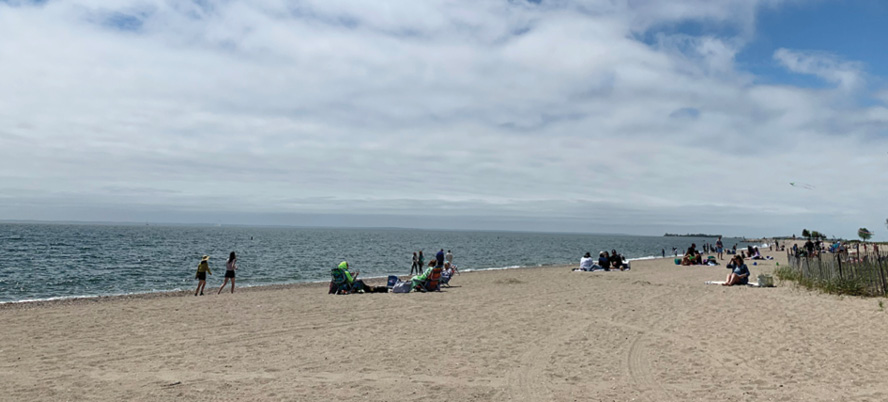The state is betting that travelers, both within Connecticut and in neighboring states, are ready to hit the road this summer and take advantage of the various sites and attractions.
The Connecticut Department of Economic and Community Development (DECD) and the Connecticut Office of Tourism just announced a $1.2 million marketing campaign, “Good to See You Connecticut,” designed to help reinvigorate revenues for the thousands of tourism businesses across the state impacted by temporary closures driven by the COVID-19 pandemic.

As part of the second phase of the state”™s reopening plan, the tourism sector has been “preparing for quite some time,” state Tourism Director Randy Fiveash said. “This is a recovery campaign and we had to make sure the tourism industry was ready for it.”
Running from June 22 through Labor Day (Sept. 7), the “Good to See You” messaging will be delivered through an integrated array of marketing tactics, including:
- Paid social media campaigns across Facebook, Instagram, Snapchat and Pinterest;
- New content on ctvisit.com, the state”™s official tourism website, which recorded about 7 million visitors in 2019;
- Paid search marketing and content seeding programs;
- A new video series showcasing how tourism businesses have adapted their operations to optimize visitors”™ safety as well as enhance their experience; and
- A new TV campaign that will run in-state as well as on streaming TV in proximity states beginning in July
The multimedia campaign is targeted to deliver 94 million impressions, which Fiveash said reflects the need to “make sure we”™re covering all aspects of how visitors search for information, whether it”™s on streaming TV like Hulu, social media, or more traditional PR.”
Fiveash described his agency as “a very research-driven organization.” As a result, the marketing efforts will be limited to Connecticut and neighboring New York, Massachusetts and Rhode Island, whose residents are most likely to travel to the Nutmeg State, according to past data.
“Even before the pandemic, our key costs were focused on in-state and those three other states,” he said. “Those are people who want to travel here.”

But how many people want to travel anywhere this summer remains an open question. Nationwide, state and local tax revenue from hotel operations are predicted to drop by $16.8 billion in 2020, according to a new report by Oxford Economics released on June 18 by the American Hotel & Lodging Association.
And according to a forecast prepared for the U.S. Travel Association by Tourism Economics, domestic travel spending is forecast to drop 40% (from $972 billion in 2019 to $583 billion in 2020) while international inbound spending is expected to plummet by 75% ($155 billion to $39 billion).
Total domestic trips taken by U.S. residents are expected to fall 30% from last year to 1.6 billion ”” the lowest figure since 1991, another recession year.
“The data is telling us that travel and tourism has been more severely damaged than any other U.S. industry by the economic fallout of the health crisis,” said Tori Emerson Barnes, U.S. Travel Association executive vice president for public affairs and policy. “Given that travel employed one in ten Americans and was the number two U.S. export before the pandemic, supporting this industry through to the recovery phase ought to be a national priority.”
The organization is in discussions with a number of members of Congress, with priorities including:
Ӣ Extending Paycheck Protection Program eligibility to destination marketing organizations. Most of these groups are currently ineligible for aid because they carry a nonprofit or quasi-governmental designation.
Ӣ Tax incentives, including a temporary travel tax credit; restoring the business entertainment deduction; support for the hard-hit meetings and events sector; and tax credits for personal protective equipment (PPE) and facilities sterilization.
”¢ Protection from “frivolous” COVID-related lawsuits for businesses that follow proper health and safety guidelines.
Ӣ Providing a federal backstopfor the issuance of pandemic risk insurance to give businesses financial cover from future outbreaks or another wave of infections, similar to the Terrorism Risk Insurance Act enacted after 9/11.
“Our research shows us that visitors are eager to travel here,” Fiveash said. “Obviously we want them to know that they will be safe wherever they go, that the proper safety protocols outlined by the governor”™s executive orders and the CDC (Centers for Disease Control and Protection) are in place. The campaign in part will show that our businesses ”” which include hotels, restaurants and other attractions ”” are safe.”
Still, there”™s no doubt that Connecticut”™s tourism industry has been hit particularly hard by the pandemic. According to the state Department of Labor, the leisure and hospitality supersector suffered the most in April, losing 72,500 positions and posting an unemployment rate of 50.1%.
Connecticut”™s tourism industry is a key contributor to the state”™s economy, generating $15.5 billion in business sales, $2.2 billion in tax revenues ”” including $960 million in state and local taxes ”” and 84,254 jobs (123,500 total supported jobs).
“We know our state”™s tourism and hospitality-related businesses have been extremely challenged by this pandemic,” DECD Commissioner David Lehman said. “But we also know they are particularly well-positioned to capitalize on the pent-up consumer demand to get out and do things again without having to travel too far from home.”
Fiveash described the sector as “a very resilient industry,” and predicted that the lost jobs will quickly be filled as the summer goes on.
As for the state”™s six welcome centers ”” which after years of limited hours and staffing came fully back online in September ”” they have been closed throughout the pandemic.
“Our goal is to open them on July 1,” Fiveash said. “We need to make sure all the protocols are implemented, with Plexiglas at the counters, face masks, that sort of thing.”
Dealing with brochures might be a challenge, he acknowledged: “If someone picks up a brochure and decides they don”™t want to keep it, we don”™t want them to put it back in the pile,” he said.



















